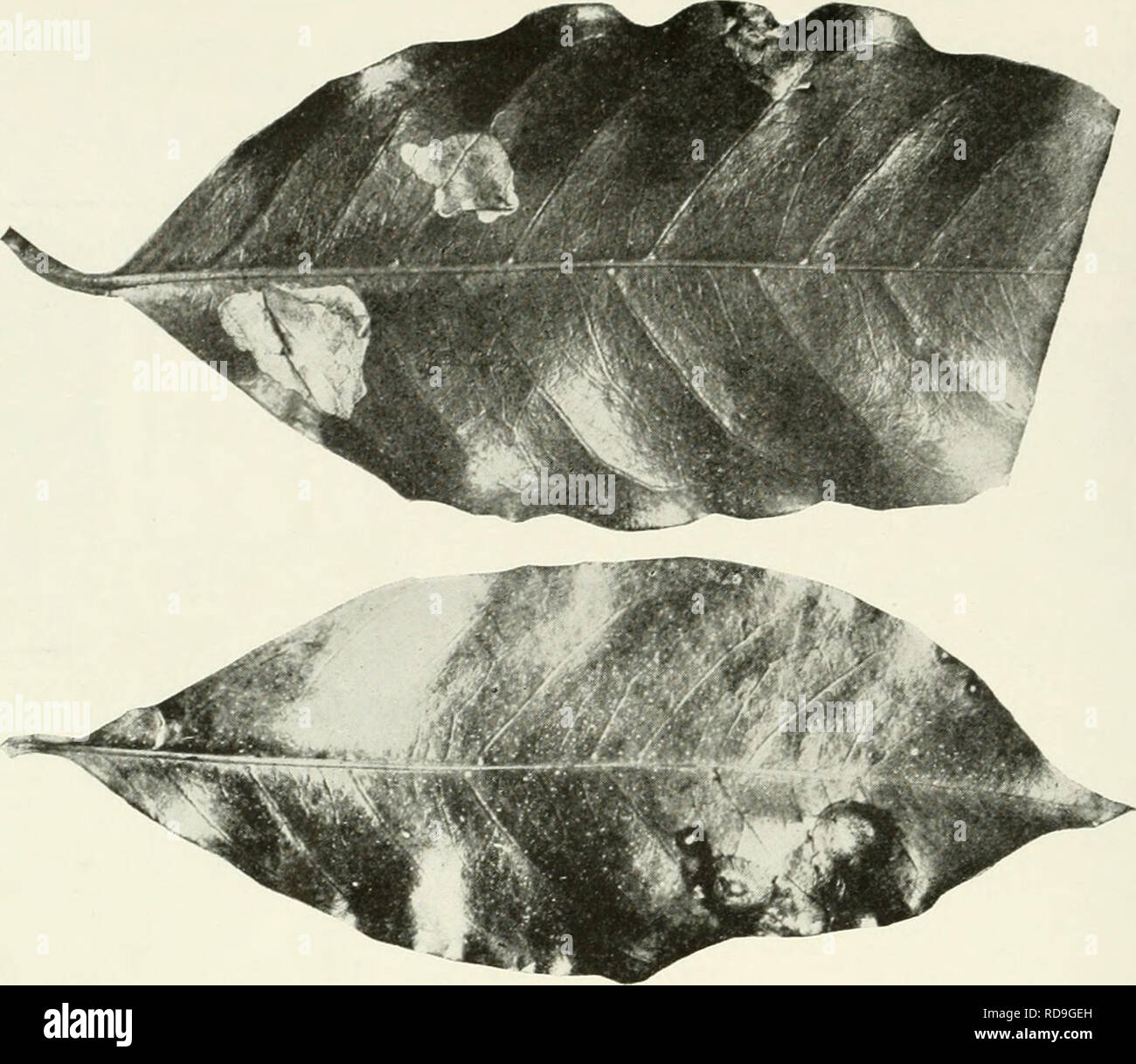. The Cuba review. 34 THE CUBA REVIEW. A coffee plant pest. Coffee leaf showing depredation of coffee leaf miner, common in Cuba, annually causing a crop loss of 10 per cent. Its extermination can be accomplished by spraying an emulsion of one part kerosene, one part whale oil soap and eight parts of water. Thoroughly wet the lower surface of the leaves twice a week during the last sis or eight weeks of the rainy season. This treatment will destroy the pupae and the plants will be comparativelyjhealthy the following year. ORIENTES MOUNTAINOUS COASTJ To the traveler who ha.s read much and seen

Image details
Contributor:
The Book Worm / Alamy Stock PhotoImage ID:
RD9GEHFile size:
7.2 MB (349.2 KB Compressed download)Releases:
Model - no | Property - noDo I need a release?Dimensions:
1697 x 1473 px | 28.7 x 24.9 cm | 11.3 x 9.8 inches | 150dpiMore information:
This image is a public domain image, which means either that copyright has expired in the image or the copyright holder has waived their copyright. Alamy charges you a fee for access to the high resolution copy of the image.
This image could have imperfections as it’s either historical or reportage.
. The Cuba review. 34 THE CUBA REVIEW. A coffee plant pest. Coffee leaf showing depredation of coffee leaf miner, common in Cuba, annually causing a crop loss of 10 per cent. Its extermination can be accomplished by spraying an emulsion of one part kerosene, one part whale oil soap and eight parts of water. Thoroughly wet the lower surface of the leaves twice a week during the last sis or eight weeks of the rainy season. This treatment will destroy the pupae and the plants will be comparativelyjhealthy the following year. ORIENTES MOUNTAINOUS COASTJ To the traveler who ha.s read much and seen nothing of the Pearl of the Antilles, the first sight of Cuba is disappointing. One may look in vain for the tropical verdure, the Royal palms and gorgeous beauty associated with this imagined isle. What one really sees is a ragged, mountainous coast, denuded of verdure, and apparently un- watered and uninhabited. For a hundred miles we skirted this coast, and, with but one exception, we failed to find a human habitation, although twenty pairs of glasses searched among the recesses and along the coastline. The mountain ranges as we neared Santiago reached higher and higher until in places the clouds hung about the higher peaks, but always towards us, they presented the same seamy, ragged, and age- marked exterior. In places the iron ore showed in broken crevices and landslides, red and rusty, like the sides of an old wTeck. Leaving Guantanamo, we steamed on towards Santiago, passing more mountains, ragged and emaciated, suggesting some weary old hack horse with protruding ribs and razor back. About sundown we were off Santiago with its frowning Morro Castle. As we passed Morro, the Cuban army came out and lazily watched the ship go by. We counted carefuUy, and all agreed upon theTcount. The army mustered four able- bodied men, not one of them under five feet in their eight stockings, provided they had stockings. Morro Castle was the most romantic and picturesque relic which fel